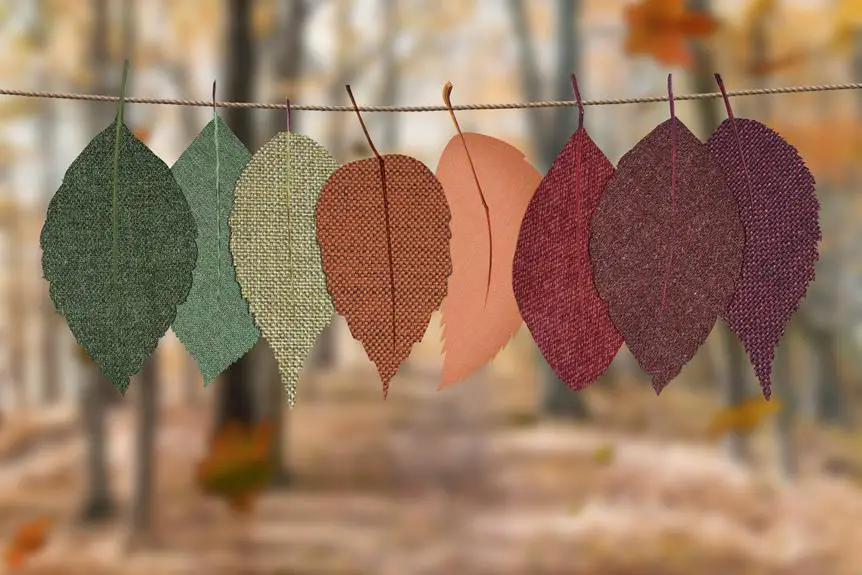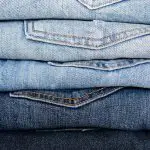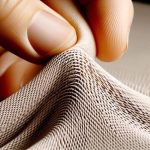Curious about the 7 sensational fabrics and their unique textures?
When it comes to the world of fabrics, the feel of viscose is truly something special. You've probably heard about it, but what does viscose actually feel like?
In this guide, we'll explore the characteristics of viscose fabric, its comparison to other fabrics, its presence in fashion and home decor, and tips for caring for it.
Get ready to dive into the world of viscose and discover why it's a favorite among those who appreciate the finer details of fabric textures.
Let's uncover the secrets of this luxurious textile together.
Key Takeaways
- Viscose fabric, also known as rayon, was developed as a cheaper alternative to silk in the late 19th century.
- Viscose fabric has a smooth, silky texture that drapes elegantly and is known for its exceptional softness.
- Viscose fabric is highly breathable, allowing air to circulate and keeping the wearer cool.
- Viscose is a desirable fabric for clothing and textiles due to its luxurious feel and versatility.
The History of Viscose Fabric
Viscose fabric, also known as rayon, was first produced in the late 19th century as a cheaper alternative to silk. The history of viscose fabric is quite intriguing. Originally, it was developed as an innovative solution to replicate the luxurious feel of silk at a more affordable cost. The production process involves treating wood pulp or cotton fibers with chemicals to create a versatile material that can mimic the drape and texture of silk. This method of production marked a significant milestone in the textile industry, leading to the mass production of rayon fabrics.
The innovation didn't stop there. Over the years, advancements in production techniques have made viscose fabric even more sustainable. Manufacturers have found ways to minimize the environmental impact of producing rayon, making it an attractive choice for those seeking eco-friendly alternatives. This commitment to sustainability has propelled viscose fabric to the forefront of the fashion industry as a versatile and environmentally conscious material.
Characteristics of Viscose
If you've ever worn viscose, you've likely noticed its smooth, silky texture that drapes elegantly. Viscose fabric is known for its exceptional softness, often compared to luxurious materials like silk and cotton. This softness makes it incredibly comfortable to wear, offering a gentle touch against the skin.
Additionally, one of the most remarkable characteristics of viscose is its breathability. The fabric allows air to circulate, making it cool and pleasant to wear in warm weather. Unlike synthetic materials, viscose doesn't trap heat and moisture, which can cause discomfort. Its breathability also makes it an excellent choice for layering in different seasons.
Whether you're wearing it as a standalone piece or incorporating it into a layered ensemble, you can count on viscose to keep you feeling comfortable. The combination of softness and breathability makes viscose a popular choice for various clothing items, from flowy dresses to lightweight tops.
When you opt for viscose, you're choosing a fabric that not only feels wonderful against your skin but also helps you stay cool and comfortable throughout the day.
Viscose Vs. Other Fabrics
When comparing viscose to other fabrics, you'll notice the difference in breathability and softness. Viscose is often compared to silk and cotton due to its luxurious feel and versatility. Here's a breakdown of how viscose stacks up against these popular fabrics:
| Aspect | Viscose | Silk | Cotton |
|---|---|---|---|
| Breathability | Viscose is highly breathable, making it | Silk is also breathable, but not as | Cotton is very breathable, allowing air to |
| suitable for warm weather. | much as viscose. | pass through easily, making it ideal for | |
| hot and humid climates. | |||
| Softness | Viscose is incredibly soft, with a smooth | Silk is known for its luxurious softness, | Cotton is soft and gentle on the skin, |
| and silky feel against the skin. | often associated with elegance. | providing comfort throughout the day. |
Viscose competes favorably with silk in terms of breathability and softness while offering advantages such as easier care and lower cost. In comparison to cotton, viscose also boasts similar breathability and softness, making it a versatile and desirable fabric for various clothing and textile applications.
Viscose in Fashion and Home Decor
In fashion and home decor, you'll find viscose used in a wide range of products, from clothing and upholstery to curtains and bedding. Viscose is highly versatile and is often blended with other fabrics to create luxurious and comfortable clothing items such as dresses, shirts, and skirts. Its soft and smooth texture, along with its ability to drape beautifully, makes it a popular choice for high-end fashion garments. Viscose blends well with other fibers, enhancing the quality and appearance of the final product.
When it comes to interior design, viscose is also widely used in home decor. It's a common choice for upholstery fabric, as its sheen and softness add an elegant touch to furniture. Viscose curtains are another popular option, offering a luxurious look and a flowing drape. Additionally, bedding made from viscose fabric provides a silky feel, making it a comfortable and stylish choice for the bedroom.
In both fashion and home decor, viscose's versatility and luxurious feel make it a favored fabric among designers and consumers alike.
Caring for Viscose Fabric
Taking care of viscose fabric is simple and straightforward, ensuring that it maintains its softness and luster. Proper fabric care not only prolongs the life of your viscose garments but also ensures they continue to look and feel luxurious. By following these simple laundry tips, you can maintain the beauty and quality of your viscose fabric.
- Hand Wash: To maintain the quality of the fabric, hand washing is the best option. Use a gentle detergent and cold water to prevent shrinking or damaging the fibers.
- Avoid Wringing: After washing, avoid wringing out the fabric, as this can cause it to lose its shape and stretch.
- Lay Flat to Dry: When drying viscose fabric, lay it flat on a clean towel to air dry. Avoid hanging it, as the weight of the wet fabric can cause it to stretch.
These styling ideas will help you make the most of your viscose pieces, keeping them looking fresh and feeling fabulous.
Frequently Asked Questions
Can Viscose Fabric Be Used for Outdoor or Athletic Wear?
Yes, viscose fabric can be used for outdoor or athletic wear. It provides excellent moisture wicking, breathability, and flexibility, making it suitable for active pursuits. Additionally, it is durable, sustainable, and biodegradable, ticking all the boxes for performance and eco-friendliness.
What Is the Environmental Impact of Producing Viscose Fabric?
When considering the environmental impact of producing viscose fabric, it's important to explore sustainable alternatives and supply chain transparency. Understanding these factors can guide your choices towards more eco-friendly fabric options.
Are There Any Common Misconceptions About Viscose Fabric?
Misconceptions about viscose fabric often overlook its comfort and durability. It's not just about being environmentally friendly; it's also soft and long-lasting. Understanding these qualities can help you appreciate this sensational fabric even more.
Can Viscose Fabric Be Dyed or Printed With Different Patterns?
Yes, viscose fabric can be dyed and printed with different patterns. This allows for a wide range of color options and designs. It's a great way to customize the fabric while still maintaining its comfort and durability.
Are There Any Special Considerations for Storing Viscose Fabric?
When storing viscose fabric, proper care is crucial. Be mindful of humidity control to prevent mold and mildew. Store in a cool, dry place away from direct sunlight. Avoid folding for extended periods.
- Recycling Nonwoven Fabrics: Is It Possible? - July 11, 2025
- Recycling Nonwoven Fabrics: Is It Possible? - July 11, 2025
- Recycling Nonwoven Fabrics: Is It Possible? - July 11, 2025





